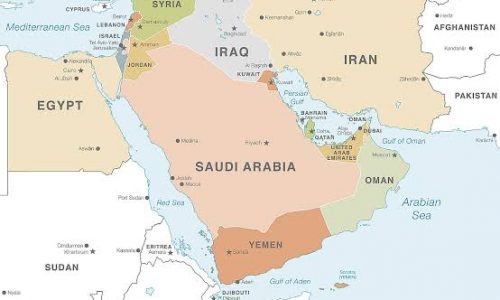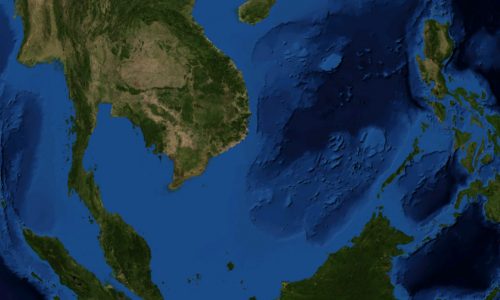Conventional discourse defines geopolitics as the projection and implementation of bargaining positions in international relations in terms of the geographical position of a country or region relative to other countries and regions (Ratzel, 1897; Kjellen 1917). It is in that context that the concept and doctrine of military superiority as a symbol of land control (Mackinder, 1904; Haushoffer (1941), sea (Mahan, 1890), and air (Doughet, Francis, 2020) gets its accentuation.
The United States military and defense doctrine
Along with advances in science and technology, the concept of mastery of the land, sea and air dimensions is starting to be considered old fashioned. The new geopolitical paradigm incorporates elements of cyberspace (cyber warfare) and electronic warfare (EW) operations as important elements. The US is the pioneer. The US military’s Training and Command (Tradoc) Command (Pamphlet 525-8-6) January 2018 issued a concept of cyberspace operations and electronic warfare 2025 – 2040. In the book, it is requested that all branches of the military identify and develop doctrine, organization, exercises, materials, leadership and education, personnel, facilities and policies, which are cyber and EW based.
The US armed forces consist of 6 (six) dimensions, namely the Army, Marine Corps, Navy, Air Force, Space Force and Coast Guard. The Commander-in-chief of the US Military is the President. In each dimension, there is a Chief of Staff who comes from the active military. There is no structure that has a direct command to the six dimensions like the TNI (Indonesian Military) Commander model. The Joint Chiefs of Staff is a senior coordination forum for force leadership, which provides advice to the President, the Department of Defense, the Department of Homeland Security and the National Security Council regarding military matters.
The Space Force has only been established in December 2019, separate from the Air Force. The origins of the urgent need for this force can be traced back to the cold war with the Soviet bloc in the 1960s. The Space Force’s seven core competencies include orbital warfare, electromagnetic space warfare, space combat management, space access and continuity, military intelligence, cyber operations and engineering and acquisitions.
From the core competencies above, we can immediately understand that the first and foremost actor is technological sophistication, both to paralyze opponents and to establish dominance. Modern warfare is a technological war. The acquisition of defense equipment (the main weapon system tool) whose delivery is long-term and still several decades into the future, needs to consider and anticipate this so that by the time the order arrives, the system is out of date or loses its superiority.
Take cyber operations as an example. Cyber operations are the use of cyber attacks against enemy countries, with attacks on computer systems that can disrupt weapons systems or communication systems, hardware or software. The instruments are espionage, sabotage, propaganda, manipulation or economic warfare.
Engineering is focused on developing spacecraft, astronauts and aeronautics. The acquisition includes investment in technology, programs and supporting products needed to achieve the national security strategy, including the military. Partnerships with the military industry are part of the US government’s strategy to develop and achieve these ambitions of excellence. Civilian projects – such as those related to space research and development – require screening, supervision and coordination with the military. The Defense Production Act is one of the legal grounds for the US civil authorities to promote industrial bases for the benefit of national defense. At this point, Elon Musk plays an important role.
Elon Musk and superiority of cyber and space
The 50-year-old man, the richest person on the planet – total wealth as of May 2022 is approximately US$265 billion – is the founder, CEO and Chief Engineer at SpaceX, Tesla, Inc. He is also an important shareholder in Neuralink and OpenAI. SpaceX is the aerospace industry, a provider of space transportation services and satellite communications systems. The main ambition is for humans to conquer and inhabit the planet Mars as the next colony of Earth.
Some of his achievements include the development of a large cargo carrier rocket into space that can be used back and forth, namely the Falcon 9. Its success in streamlining the cost of space satellite transportation operations has made competitors such as Roscosmos, a Russian state-owned enterprise, frustrated. Several military contracts with the US Air Force, NASA and major companies operating satellites in earth orbit have been obtained. As an illustration, the cost of renting a single transport of goods to the space station is pegged at US$100 million. Like the regular aircraft system, he also provides discounts (a kind of early bird) to potential space passengers who book tours to Mars early.
Neuralink is a business field that develops artificial intelligence, through a type of device that can be implanted in the brain’s nerves, which can communicate with machines (implantable brain-machine interface). Although it is currently still in the development stage – and has received criticism from several universities such as the MIT Technology Review – it can be expected that the power of a person’s free will can be controlled or controlled by a machine. This will be a tremendous force.
Musk is also a shareholder in companies engaged in online payment systems such as X.com and PayPal. To control information and big data in the public, Musk is rumored to be the largest shareholder of Twitter. Mastery of space technology, electronic systems, artificial intelligence, payment systems and big data, in the hands of one person is actually a formidable, and perhaps frightening power.
Mastery of space as a new geopolitical field
The control of space is a field of struggle for hegemony in the future and has become the attention of countries in the world. The countries that are members of the BRICS (Brazil, Russia, India, China and South Africa) are working more closely by forming a Joint Committee on space cooperation, which includes data sharing and satellite observations. At this stage, the cooperation is still limited to civilian activities such as climate change solutions, environmental protection efforts, and disaster prevention and mitigation (Financial Express, May 2022).
In Russia’s current war on Ukraine, Musk is proving his support by providing the Ukrainian government with the Starlink fast satellite communications system. This support is suspected to not only involve internet communication services but also those that can interact with military drones (unmanned aerial vehicles) and facial recognition systems to checkpoints for military movements. Starlink is a cluster (constellation) of internet service provider satellite networks that orbits space at a low altitude (Low-Earth Orbit) at a distance of 550 kilometers from the earth. It currently has nearly 2,400 satellite stations, all of which are transported on the SpaceX Falcon 9, and is under development to reach 12,000 in the next five years, with a total target of 42,000 stations. This is the largest satellite network of its type.
Generally, conventional satellites are satellites with a single geostationary orbiting at an altitude of 35,000 kilometers in space. There is no minimum limit to sovereignty in space. The Chicago International Civil Aviation Convention 1944 only states that the principle of a state’s sovereignty over space is complete and exclusive. This means that the air sovereignty limit of a country is as long as that country has the ability to enforce the law in its entirety at the upper limit that it claims.
China Military Media – on May 5, 2022, reported that the PRC government views the Starlink satellite system as a threat to the national security of the PRC government and the state. It is known that the US military cooperated and awarded service contracts to Starlink. In 2020, SpaceX will reach US$150 million for the military use of satellites. Next, there is a contract with the US Air Force to test the internet usage system. If successful, the StarLink satellite cluster will be able to be fitted with reconnaissance, navigation and meteorology devices to further enhance the military’s combat capabilities. This includes reconnaissance, remote sensing, communication relay, navigation and positioning, attack and collision, as well as space protection.
Furthermore, the military journal concluded that if this was allowed to continue, SpaceX could not legitimately take refuge as a vehicle for the civilian industry. A massive program regarding the placement of low-orbit satellite stations up to 42,000 stations, will allow SpaceX to control 80% of communication systems and take a monopolistic position on strategic resources.
The combination of monopoly and hegemony that can be exploited by the US military is seen as twin brothers who will be able to push the world towards new chaos and disaster. Space has actually transformed and metamorphosed into a new geopolitical battle theater.
The world is waiting anxiously. At the same time very scary.
Jakarta, June 2022
The writer is Defense University Alumni, majoring in Energy Geostrategy, and National Resilience Institute (Lemhanas) Alumni









